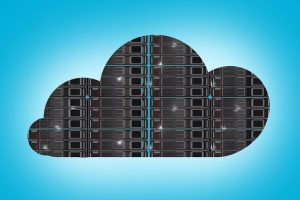Choose the Right VPS for Website Performance
As your website grows, shared hosting can quickly become a bottleneck, impacting speed and reliability. A Virtual Private Server (VPS) offers a powerful middle ground, providing dedicated resources and greater control. This article delves into the crucial factors for selecting the right VPS configuration – CPU, RAM, storage, and bandwidth – to ensure your website thrives.
Understanding VPS and its Benefits
Before diving into the specifics of configuration, it’s vital to understand what a VPS is and why it’s a step up from shared hosting. In shared hosting, your website shares server resources – CPU, RAM, and storage – with numerous other websites. This can lead to performance issues if another site experiences a surge in traffic, as it might consume a disproportionate amount of resources, slowing down everyone else. In essence, you’re in a multi-tenant environment where resource competition is inherent.
A VPS, on the other hand, utilizes virtualization technology to create isolated virtual environments on a physical server. While multiple VPSs reside on the same hardware, each has its own dedicated portion of resources. This dedication translates to consistent performance and greater control. Think of it like renting an apartment in a building versus sharing a room in a house. You have your own space and aren’t directly impacted by your neighbors’ activities.
The benefits are substantial. Besides performance, VPS hosting provides:
- Root Access: Allows for complete customization and control over the server environment, ideal for developers and those requiring specific software configurations.
- Scalability: Easily upgrade resources (CPU, RAM, storage) as your website grows, without the need for complete migration. This is significantly more difficult with shared hosting.
- Dedicated Resources: Guaranteed resources mean your website isn’t affected by the actions of other users.
- Enhanced Security: Isolation from other users provides an extra layer of security, reducing the risk of cross-site contamination.
- Custom Software Installation: Freedom to install any necessary software or applications.
However, VPS hosting isn’t entirely hands-off. It often requires a degree of technical expertise for server management – though many providers offer managed VPS solutions where they handle the server administration for you. This is an important consideration when choosing a VPS provider and plan.
CPU: The Brains of the Operation
The Central Processing Unit (CPU) is essentially the brain of your server. It’s responsible for processing all instructions and calculations. When evaluating CPU options for your VPS, you’ll typically encounter terms like “cores” and “vCores”. A core represents a physical processing unit within the CPU. A vCore (virtual core) is a virtualized core, meaning it’s a portion of a physical core dedicated to your VPS. While sometimes indistinguishable from physical cores in terms of performance, it’s often wise to favor providers who clearly specify physical cores when possible.
Determining the number of cores needed depends heavily on your website’s workload. Here’s a breakdown:
- Low Traffic/Static Websites (e.g., simple blogs, landing pages): 1-2 vCores are usually sufficient. These sites primarily serve static content, requiring minimal processing power.
- Medium Traffic/Dynamic Websites (e.g., WordPress blogs with moderate traffic, small e-commerce stores): 2-4 vCores are a good starting point. Dynamic content generation (like database queries for WordPress) demands more CPU power.
- High Traffic/Resource Intensive Applications (e.g., large e-commerce sites, video streaming, complex web applications): 4+ vCores are necessary. These sites handle a significant volume of requests and require substantial processing capacity.
It’s not just the number of cores, but also the speed of the processor that matters. Look for VPS providers that specify the CPU model (e.g., Intel Xeon E5-2680 v4) and its clock speed (measured in GHz). Higher clock speeds generally mean faster processing. Newer CPU generations (e.g., Intel Xeon Scalable processors) offer significant performance improvements over older ones, even with the same number of cores and clock speed. Consider the architecture – AMD’s EPYC processors are also competitive and provide excellent value for money.
To accurately assess your CPU requirements, utilize website analytics tools like Google Analytics or tools built into your web hosting control panel to monitor CPU usage. If your CPU consistently nears 100% utilization during peak hours, it’s likely time to upgrade to a VPS with more cores or a faster processor.
RAM: The Short-Term Memory
Random Access Memory (RAM) acts as the server’s short-term memory. It stores data actively being used by processes. Insufficient RAM leads to slow loading times, frequent crashes, and a poor user experience as the server resorts to using the much slower hard disk drive (or even SSD) as virtual memory – a process called “swapping.” Swapping drastically impacts performance.
RAM requirements depend on several factors:
- Website Platform: WordPress, for example, is a relatively resource-intensive platform compared to a static HTML site.
- Traffic Volume: More visitors mean more simultaneous requests, requiring more RAM to handle them efficiently.
- Caching: Effective caching (using plugins like W3 Total Cache or WP Super Cache for WordPress) can significantly reduce RAM usage by storing frequently accessed data in memory.
- Applications and Services: If you’re running database servers (like MySQL or PostgreSQL), email servers, or other applications on your VPS, they will consume RAM.
Here are some general guidelines for RAM allocation:
- Small Websites/Blogs (low traffic): 1GB – 2GB RAM
- WordPress Sites (moderate traffic): 2GB – 4GB RAM
- E-commerce Sites (moderate traffic): 4GB – 8GB RAM
- High-Traffic Websites/Resource Intensive Applications: 8GB+ RAM
Like CPU, monitoring RAM usage is crucial. Again, use your website analytics tools or server monitoring tools to track RAM consumption. If your server consistently runs at or near its RAM limit, you need to increase your RAM allocation. Remember, it’s generally better to overestimate your RAM needs slightly than to underestimate them.
Storage and Bandwidth: Persistent Memory and Data Transfer
Storage refers to the amount of space available on your VPS to store your website files, databases, emails, and other data. Two main storage types are available: HDD (Hard Disk Drive) and SSD (Solid State Drive). SSDs are significantly faster than HDDs – often 10-100x faster – leading to quicker website loading times and improved overall performance. Always opt for SSD storage if your budget allows. NVMe SSDs are even faster than standard SSDs, but may come at a premium.
Storage requirements vary depending on:
- Website Size: The amount of content (text, images, videos) on your website.
- Database Size: The size of your database (if applicable).
- Log Files: Server logs can consume substantial storage space over time.
- Future Growth: Factor in anticipated growth in content and traffic.
A good starting point is 20GB – 50GB of SSD storage for most websites, but more may be needed for larger sites or those hosting a lot of media. Many providers offer scalable storage options, allowing you to easily upgrade as your needs evolve.
Bandwidth refers to the amount of data transferred between your VPS and the internet. This includes data sent *to* visitors when they access your website and data received from visitors when they submit forms or upload files. Bandwidth is typically measured in gigabytes (GB) per month.
Bandwidth requirements depend on:
- Traffic Volume: More visitors mean more data transfer.
- Page Size: Larger pages with more images and videos consume more bandwidth.
- Media Content: Streaming video or offering large downloads significantly increases bandwidth usage.
Determining the right amount of bandwidth is trickier. A simple website with limited traffic might only need a few hundred GB per month, while a high-traffic video streaming site could easily require several terabytes. Most VPS providers offer unmetered bandwidth, which means you’re not charged based on data usage. However, even with unmetered bandwidth, providers often have “fair use” policies, so it’s essential to review their terms of service. Monitor your bandwidth usage to ensure you aren’t approaching any limits.
Bringing It All Together: Making the Right Choice
Selecting the right VPS configuration is a balancing act between cost and performance. Don’t overspend on resources you don’t need, but also avoid underestimating your requirements, as this will lead to performance issues. Starting with a mid-range configuration and scaling up as needed is a smart approach. Don’t hesitate to leverage trial periods offered by many providers to test different configurations with your specific website workload. Thorough monitoring of your resource utilization (CPU, RAM, storage, and bandwidth) is the key to optimizing your VPS configuration and ensuring your website runs smoothly and efficiently. By carefully considering these factors and continually refining your setup, you’ll build a strong foundation for long-term website success.












